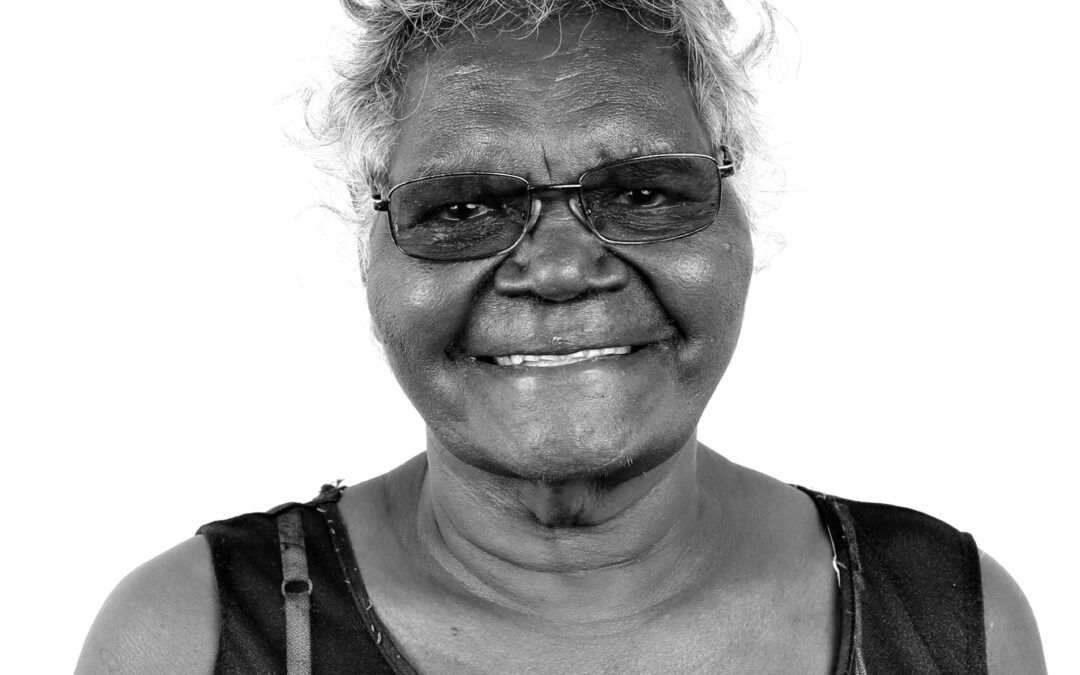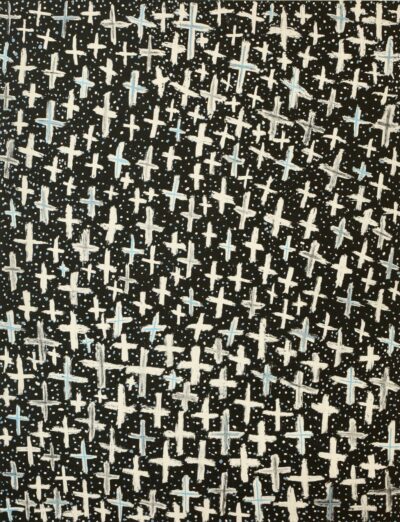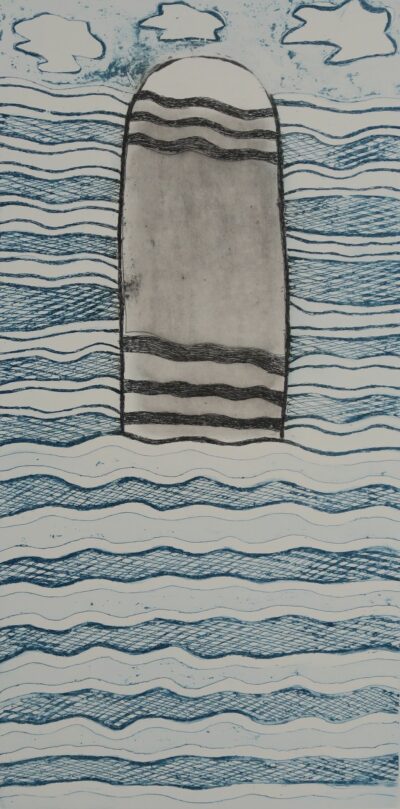naminapu-maymuru-white
Homeland: Djarrakpi
Clan: Maŋgalili, Belaŋ group
Moiety: Yirritja
Naminapu’s major interest is her art. She is an extremely versatile artist with skills in the areas of painting, carving, screen-printing, weaving, lino-cuts and batik work. As a child she used to sit for hours patiently watching her father paint. At about the age of 12, she began to learn herself, and was fortunate in being taught by her father’s brother, Narritjin Maymuru, as well as by her own father, Nånyin Maymuru. Both men were extremely able and well-known artists, whose works hang in many Australian and overseas museums. As one of the first Yolŋu women to be taught to paint miny’tji (sacred creation clan designs) she was part of the historic adaptations by the elders of the Yolŋu in the last forty years which included the revelation of previously restricted designs in pursuit of justice in the Land Rights struggle (for example The Bark Petition and The Yirrkala Church Panels).
Naminapu Maymuru was born a member of the Mangalili clan, at the Yirrkala mission station in Northeast Arnhem Land in Northern Australia in 1952. After attending the mission school, she worked for some time in the store and craft shop and also helped out in the local bank. When the Homeland Centre of Gurka’wuy was established in 1973, Naminapu went to live there with her husband and young family of three children. These were the early days of the Homeland Movement, which included the establishment by Narritjin of the Mangalili homeland of Djarrakpi (extensively documented by Ian Dunlop of Film Australia in the twenty two films of the Yirrkala Film Project). During the years she spent there, Naminapu worked as a teacher trainee and later, on her return to Yirrkala, completed her teacher training. When she later married Leon White, a teacher in the Northern Territory, Naminapu went to live for several years in Melbourne and Darwin.
She has travelled within Australia quite extensively as well as to Japan. In 1985, Naminapu returned with her husband and family to live in Yirrkala, now no longer a mission station but a locally governed Aboriginal community. Following her return, she taught art to the children at the local school and then began working at the Craft Shop attached to the Buku-Larrnggay Arts Centre. In 1990, she was appointed Curator of the recently established Art Museum attached to this Centre, a position that she held until 1996.
Naminapu’s works were exhibited very successfully with those of Bandak Marika, another Yirrkala woman artist, at a ‘dual’ exhibition held in Warnambool and Sydney, in 1990. Her works are also frequently included in combined exhibitions in Australia and overseas and she is now herself represented in most major institutional collections in the country. In August 1996 at the 13th Telstra National Aboriginal and Islander Art Awards her limited edition linoprint triptych “Nyapilingu” was chosen as the ‘Best Work on Paper’. In 1998 she was selected as the National Indigenous Heritage Art Award Joint Runner-up Normandy Art Award (for her bark “Maŋgalili”) One of her memorial poles with the Milŋiyawuy or milky way design won the Wandjuk Marika Memorial 3D award at the 2005 Telstra National Aboriginal and Torres Strait Islander Art Awards.
During 2019 and 2020 Naminapu’s works were featured in sell out solo exhibitions in Darwin and Sydney. Recent works have been acquired by the National Gallery of Victoria to be exhibited in a major survey of female bark painters from North East Arnhemland titled ‘Bark Ladies’.
In 2024 Naminapu was selected to represent Australia at the Venice Biennale as part of the exhibition Stranieri Ovunque: Foreigners Everywhere. Naminapu travelled with her grandson Ŋalakan to attend the opening of the Biennale.


